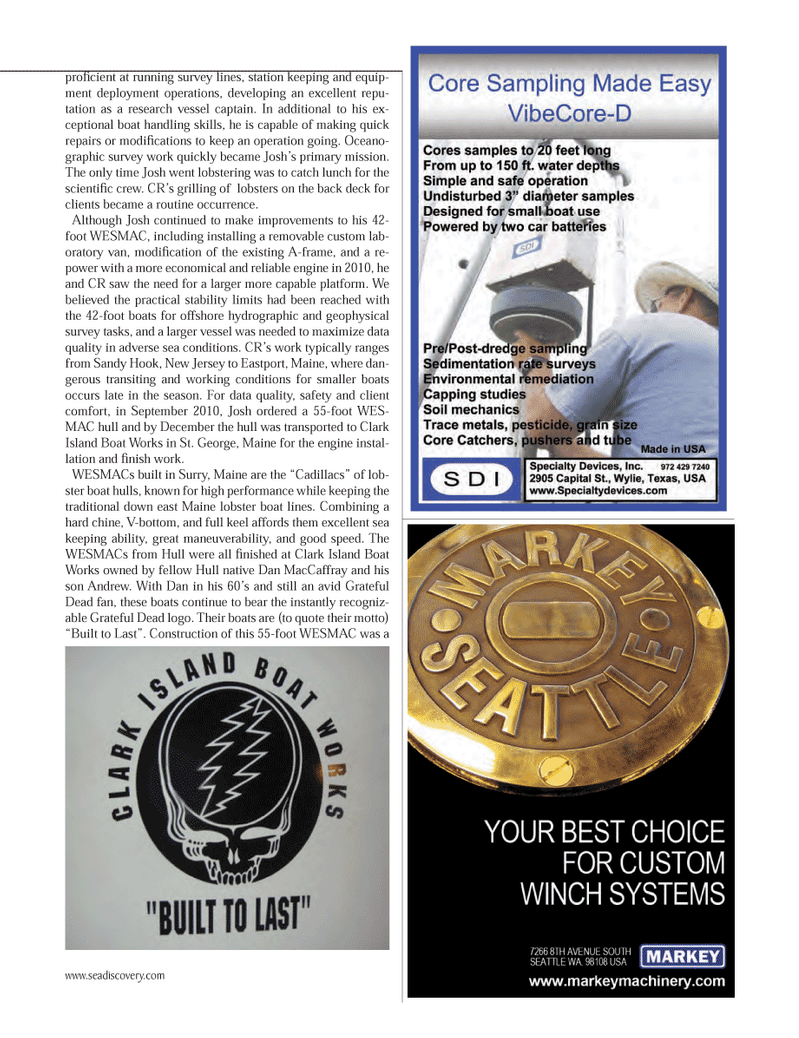
Page 47: of Marine Technology Magazine (October 2012)
Ocean Observation: Gliders, buoys & sub surface monitoring networks
Read this page in Pdf, Flash or Html5 edition of October 2012 Marine Technology Magazine
proÞ cient at running survey lines, station keeping and equip- ment deployment operations, developing an excellent repu- tation as a research vessel captain. In additional to his ex- ceptional boat handling skills, he is capable of making quick repairs or modiÞ cations to keep an operation going. Oceano- graphic survey work quickly became JoshÕs primary mission. The only time Josh went lobstering was to catch lunch for the scientiÞ c crew. CRÕs grilling of lobsters on the back deck for clients became a routine occurrence. Although Josh continued to make improvements to his 42- foot WESMAC, including installing a removable custom lab- oratory van, modiÞ cation of the existing A-frame, and a re- power with a more economical and reliable engine in 2010, he and CR saw the need for a larger more capable platform. We believed the practical stability limits had been reached with the 42-foot boats for offshore hydrographic and geophysical survey tasks, and a larger vessel was needed to maximize data quality in adverse sea conditions. CRÕs work typically ranges from Sandy Hook, New Jersey to Eastport, Maine, where dan- gerous transiting and working conditions for smaller boats occurs late in the season. For data quality, safety and client comfort, in September 2010, Josh ordered a 55-foot WES- MAC hull and by December the hull was transported to Clark Island Boat Works in St. George, Maine for the engine instal- lation and Þ nish work. WESMACs built in Surry, Maine are the ÒCadillacsÓ of lob- ster boat hulls, known for high performance while keeping the traditional down east Maine lobster boat lines. Combining a hard chine, V-bottom, and full keel affords them excellent sea keeping ability, great maneuverability, and good speed. The WESMACs from Hull were all Þ nished at Clark Island Boat Works owned by fellow Hull native Dan MacCaffray and his son Andrew. With Dan in his 60Õs and still an avid Grateful Dead fan, these boats continue to bear the instantly recogniz- able Grateful Dead logo. Their boats are (to quote their motto) ÒBuilt to LastÓ. Construction of this 55-foot WESMAC was a www.seadiscovery.com MTR #8 (34-49).indd 47MTR #8 (34-49).indd 4710/3/2012 10:13:56 AM10/3/2012 10:13:56 AM

 46
46

 48
48
